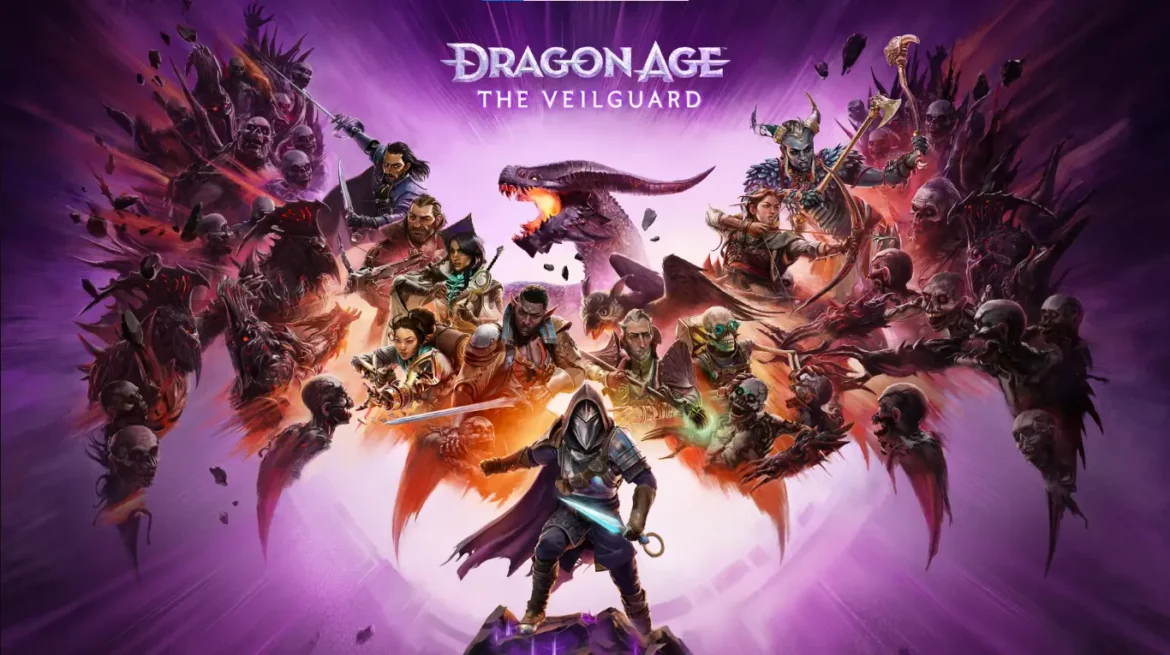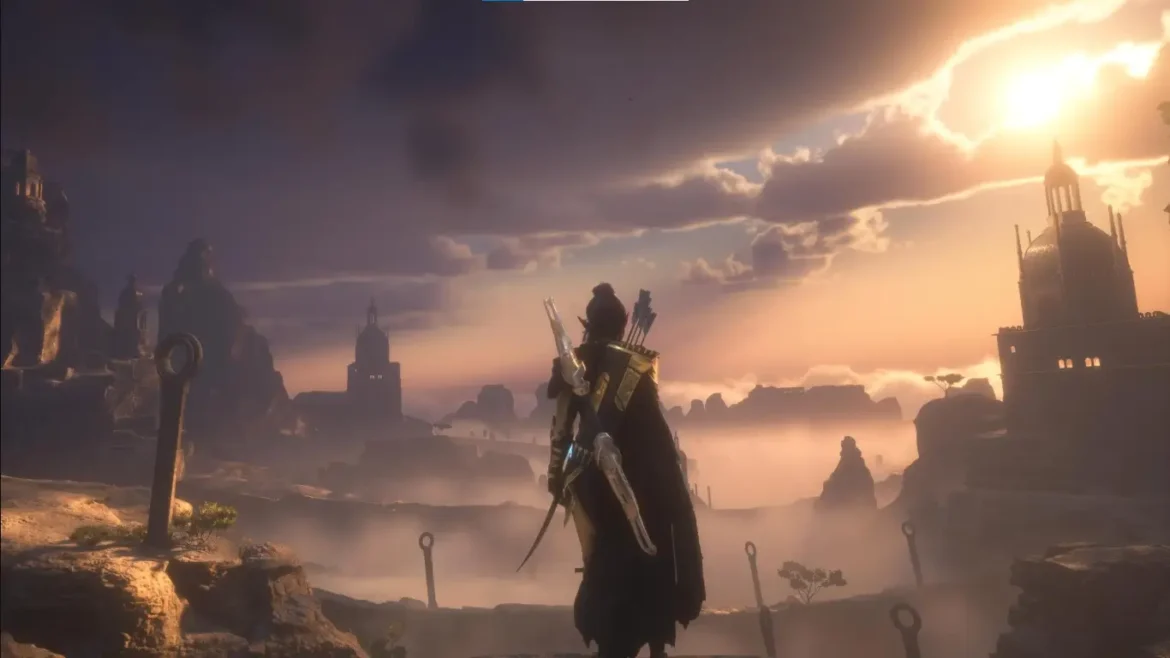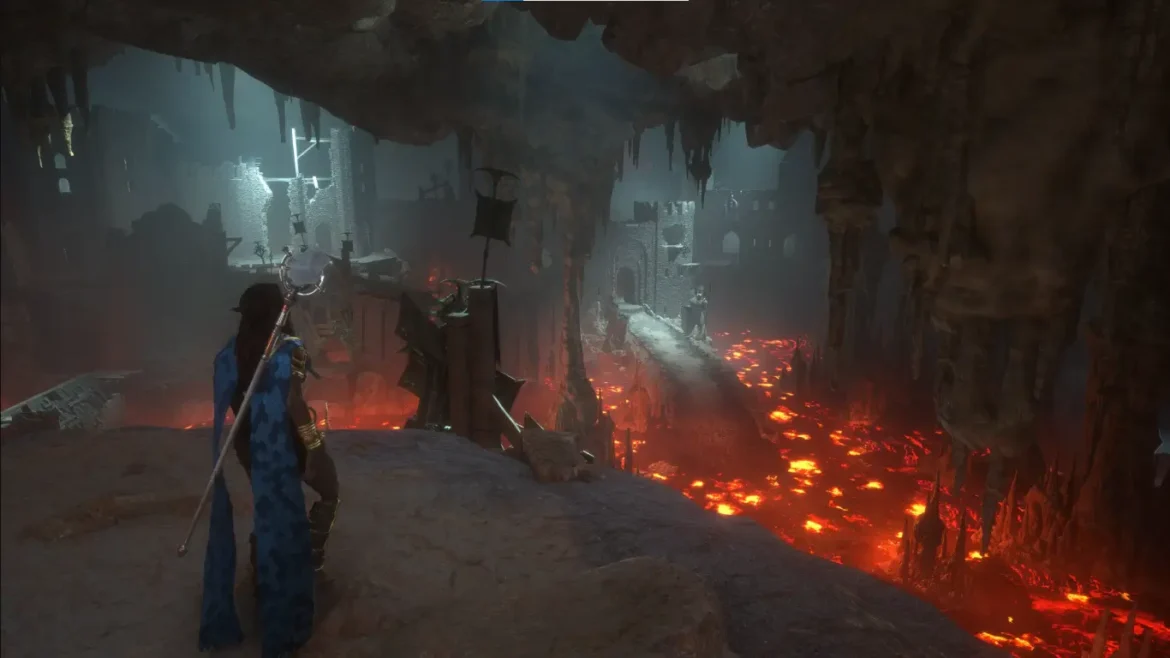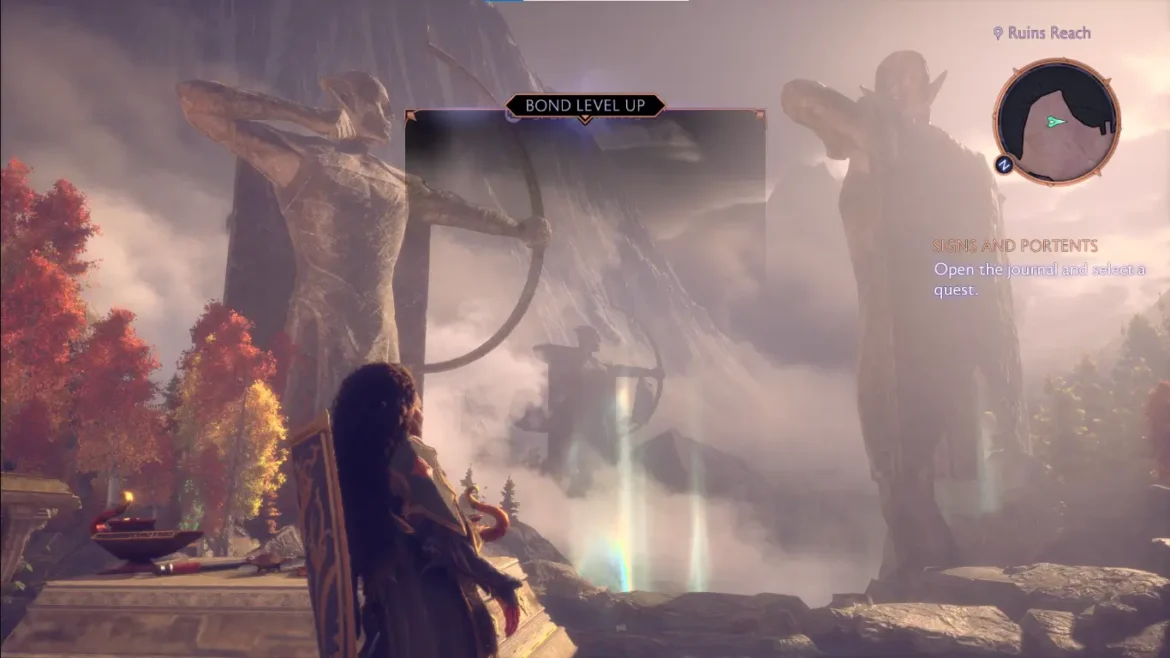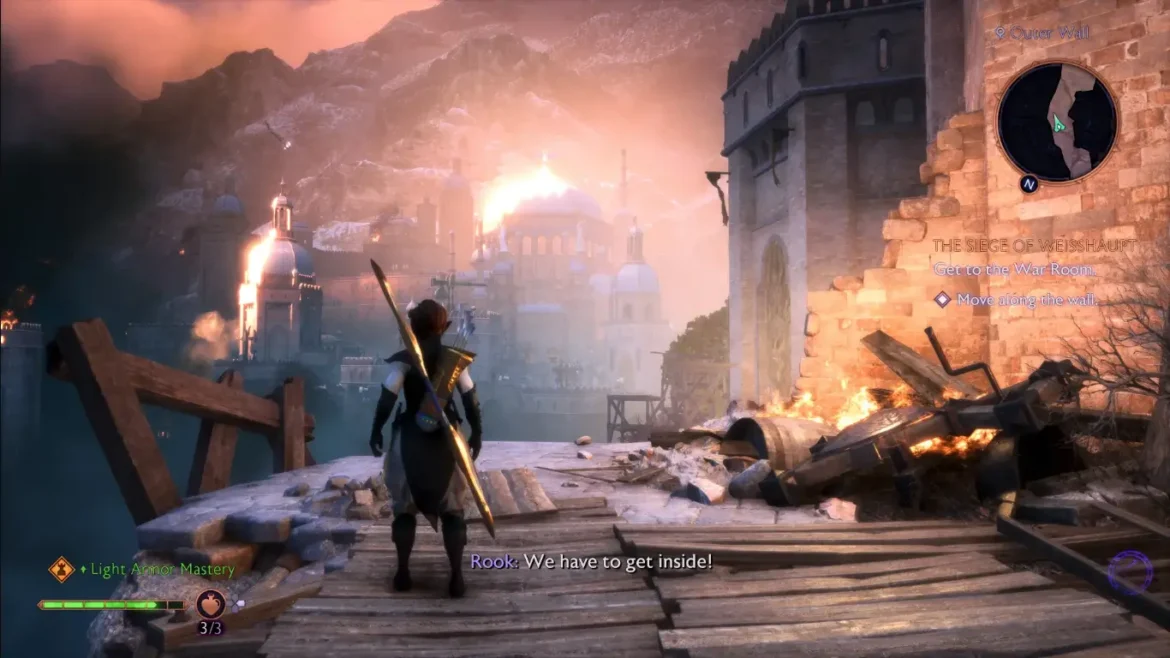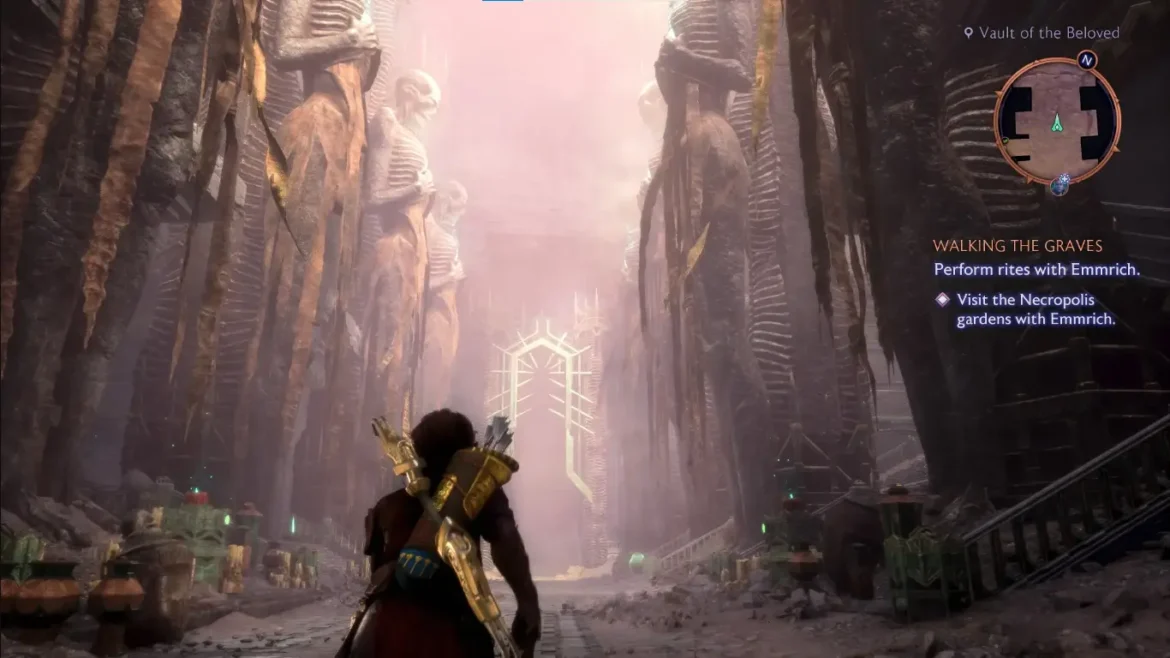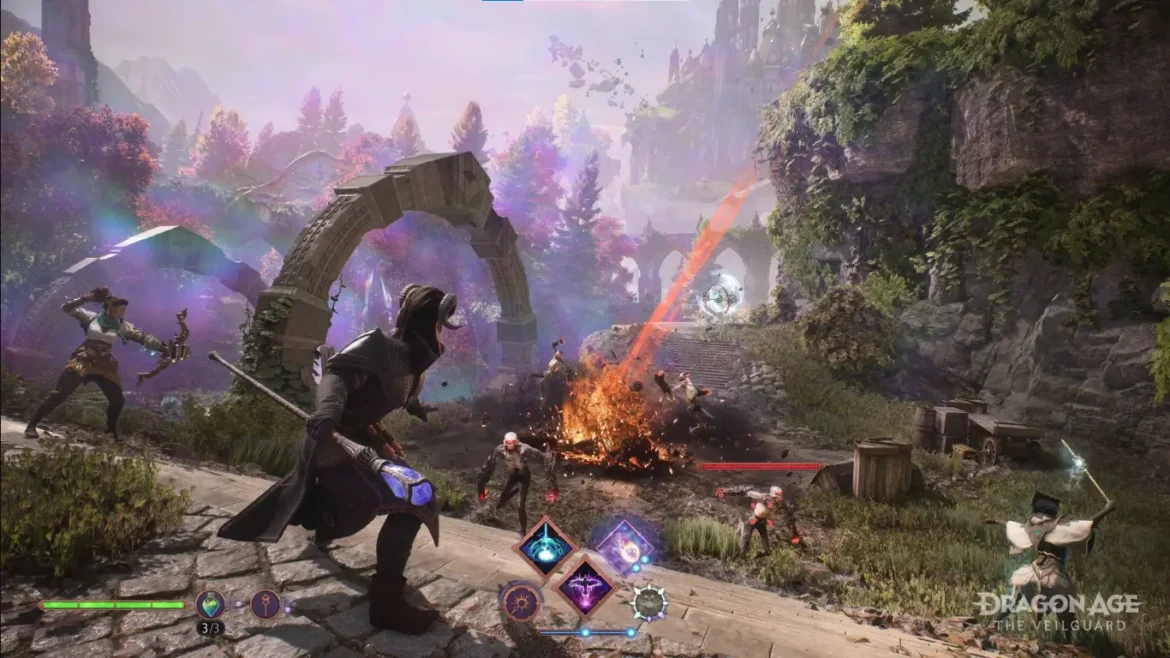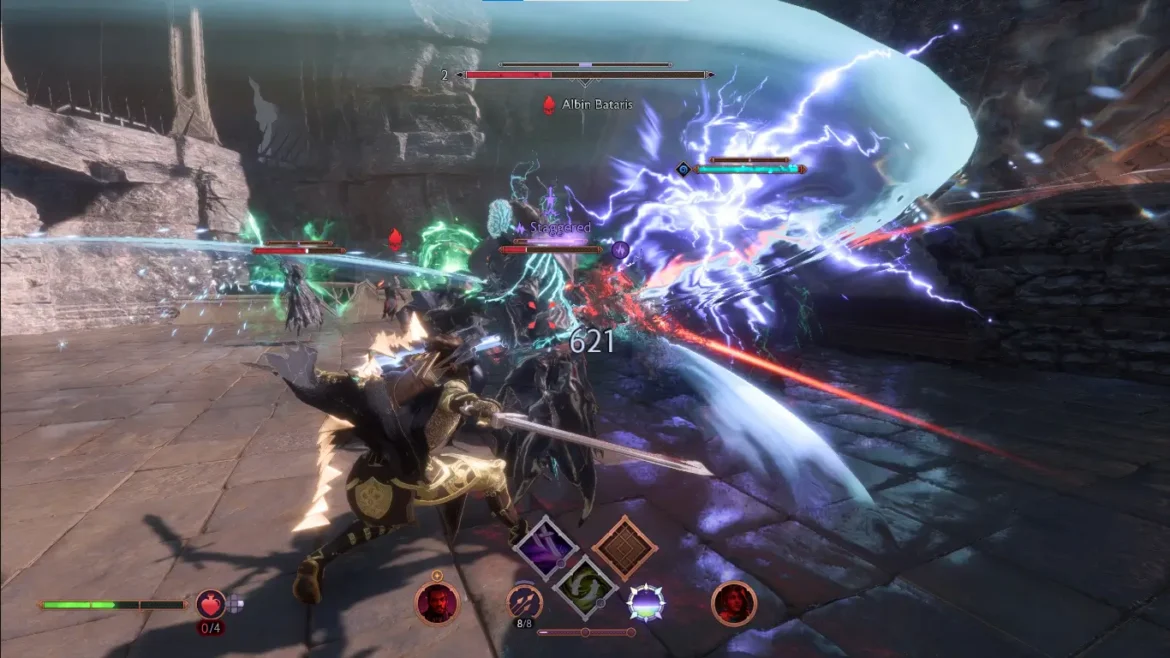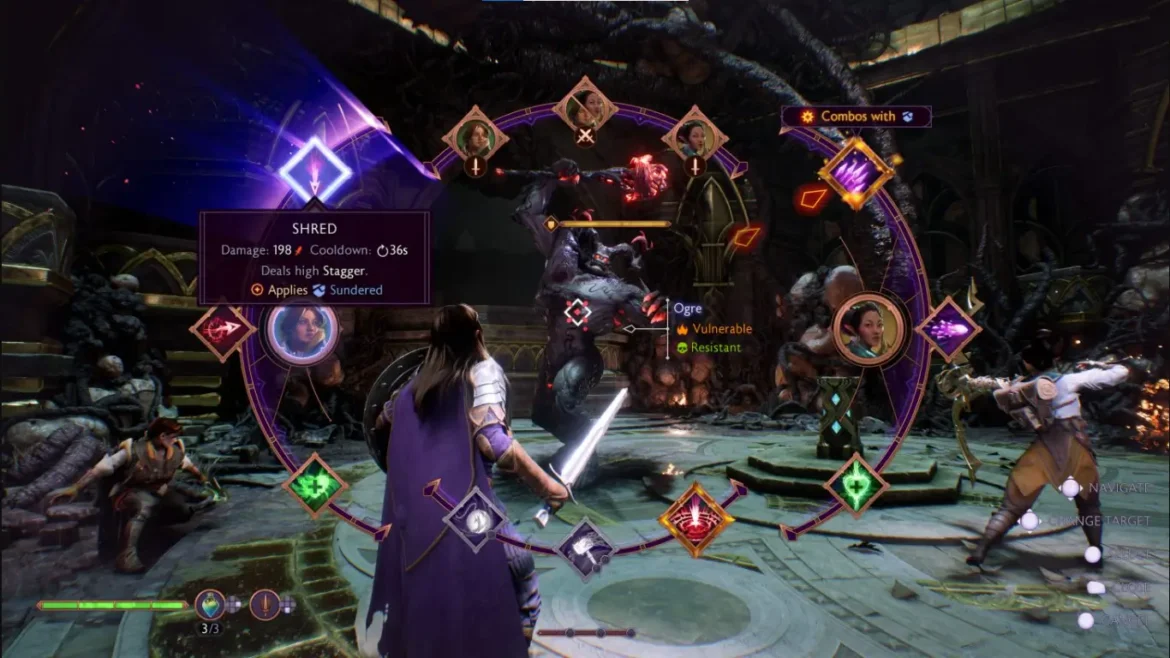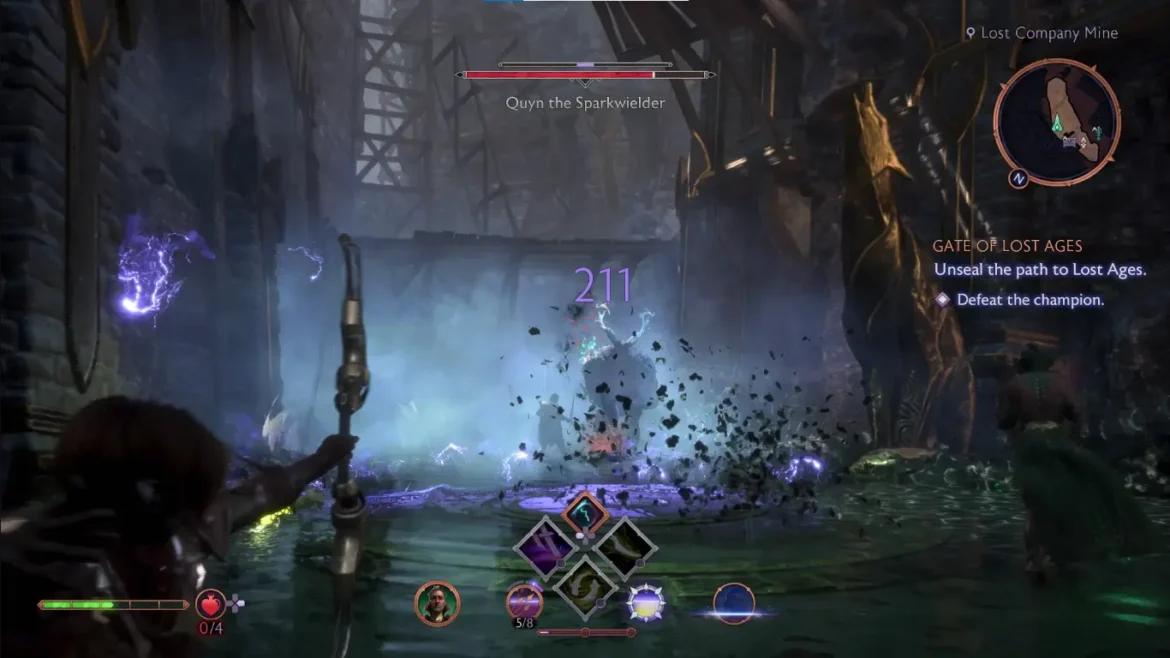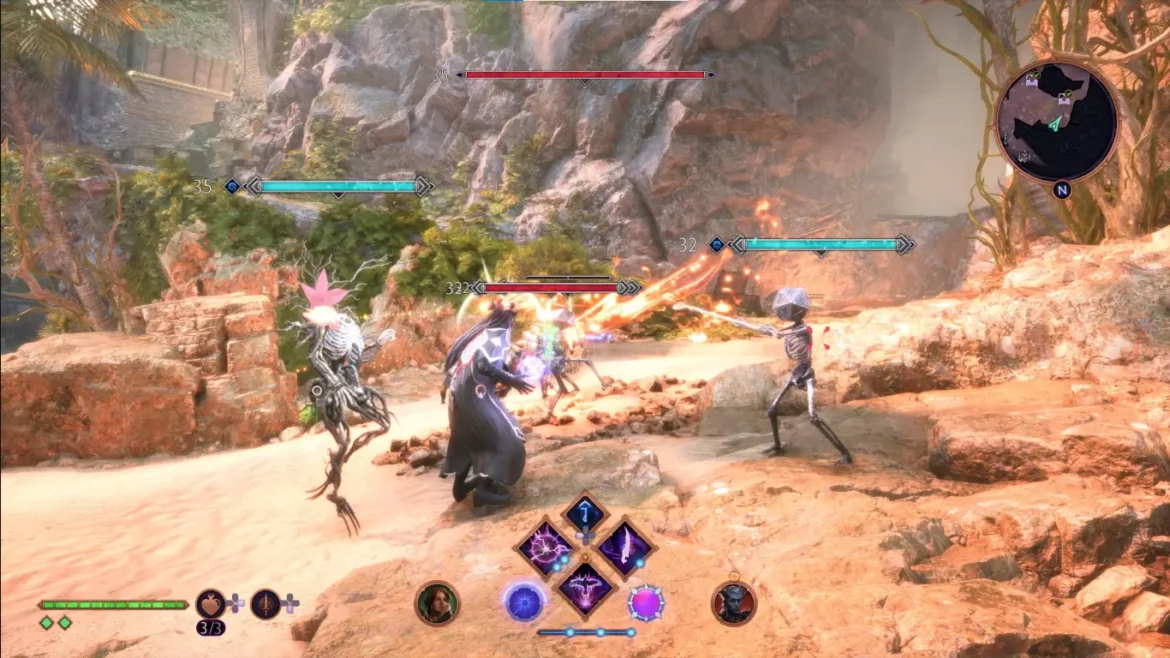Release Date : October 31, 2024
Developer(s) : BioWare
Publisher(s) : Electronic Arts
Platforms : PS5, Xbox Series X/S, PC
Dragon Age fans have been waiting a long time to finally get their hands on the latest episode in the series. Ten years after the success of Dragon Age: Inquisition, and after a complicated development process marked by postponements, name changes, and reboots in full development, Dragon Age: The Veilguard is finally here. Big fans of the license, and of Bioware’s works in general ( except for Anthem ), we eagerly anticipated the arrival of this title, even wondering whether it would be the first to be released, or the next Mass Effect. Was it worth the wait? Absolutely.
Table of Contents
A Tale of Choices and Consequences
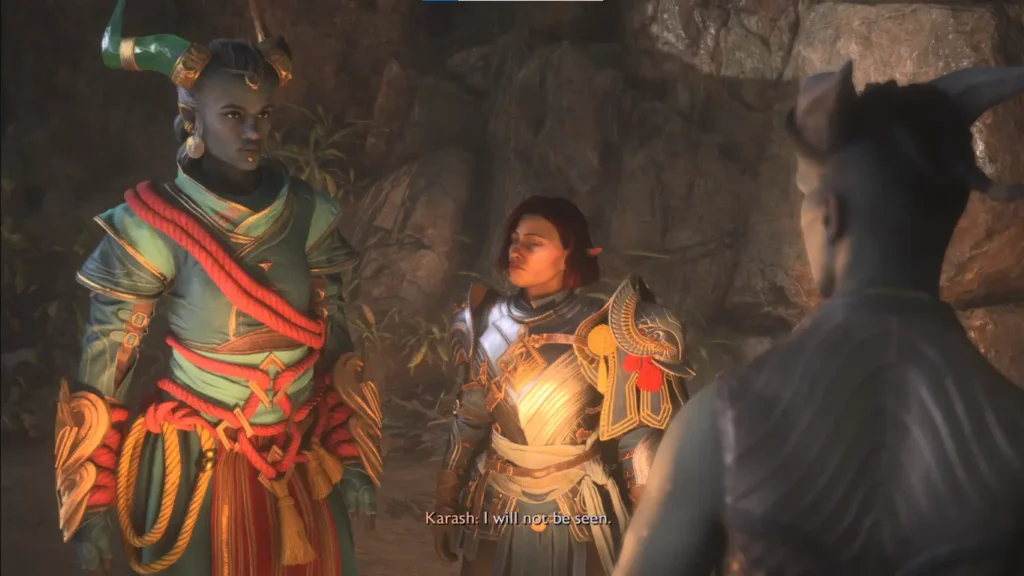
When we talk about Bioware, we can’t forget the RPG icons it has created. Dragon Age, Mass Effect, and Star Wars: Knights of The Old Republic. Each of them offers different choices, both in terms of character creation and in the dialogues occurring throughout the adventure.
Dragon Age: The Veilguard is no exception, allowing us to create our own avatar right from the start. For this purpose, Bioware has created one of the most comprehensive character editors on the market. Numerous options are available, including race (human, dwarf, elf, or qunari), gender, and physical appearance. You can settle for one of the existing models, or go one step further and use the numerous sliders to customize your appearance.
Inclusivity options are also available to enable more people to create a character that resembles them. For example, there are options for vitiligo or heterochromia, or even the presence of post-surgery scars. We welcome these options, as they allow more players to feel included, although it’s a shame that some other human body archetypes have been overlooked. It’s impossible to create female characters with generous curves or extremely muscular men. Unfortunately, inclusion isn’t all that complete. Beyond this minor setback, you can choose your character’s class from mage, warrior, or rogue. Keep in mind that, while appearance can be modified throughout the adventure, the class choice is permanent.
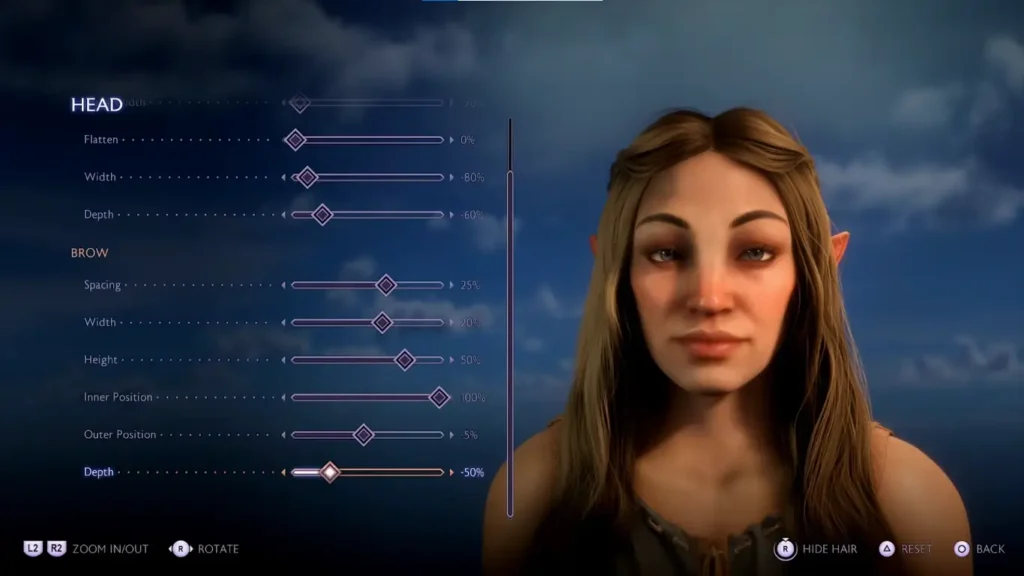
The game starts directly from the scene introduced last June, where our character (“Rook” in the game) sets off to find Solas accompanied by Varric, Harding, and Neve. Without spoiling the pleasure of discovery, you should know that events will lead to the release of two demonic elven creatures who will quickly become a threat to Thedas (the fictional continent where the games in the Dragon Age universe take place).
As a common mortal, our character is no match for such a threat, and assembles a team of specialists in a desperate battle against fate. Along the way, we’re also introduced to various factions fighting against the elven gods and their allies.
We won’t reveal anything about the plot, just know that the storytelling is really entertaining, and often reminded us of Bioware’s Golden Age: the Mass Effect trilogy. In fact, many elements were reminiscent of Mass Effect 3 and its Reaper threat. Between failures and successes at the cost of heavy losses, the journey of Rook and his companions often seemed impossible. Playing with our emotions, Dragon Age: The Veilguard’s writing is very solid, both for the main quest and the companions and faction side quests.
Expect to spend around 40 hours to complete the main story, including the companions and faction quests. It’s always possible to reduce the length by half if you focus on the main story alone, but this would mean missing out on well-written content (apart from a few rare faction quests) and the best ending (Mass Effect 3 fans will understand).
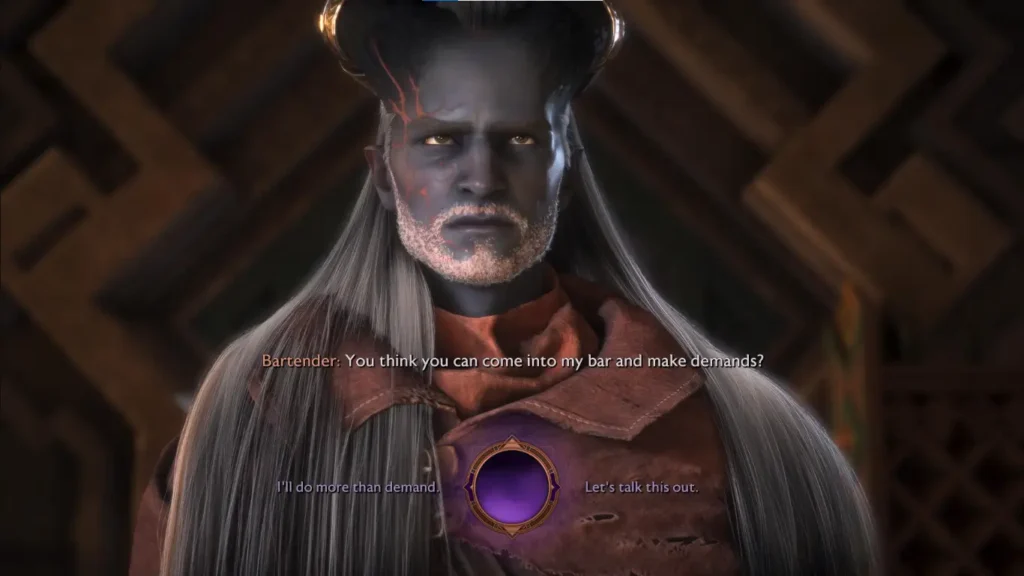
As we mentioned at the beginning of this review, one of Bioware’s and the series’ strengths is its ability to offer numerous choices during the adventure, sometimes with far-reaching consequences. However, many of these choices have no real impact on the adventure, but rather allow us to forge a certain personality for our character. What’s interesting is that our race, gender, class or faction of origin can trigger unique answers to certain situations. Finally, a Bioware game wouldn’t be the same without incorporating romance.
In Dragon Age: The Veilguard, you can romance any companion, regardless of race or gender. However, we were a little disappointed that most of these romances are nothing more than flirting, with various degrees of intensity. Making a relationship with one of the companions more formal comes late in the game, and doesn’t really evolve until the end. Note that, depending on your choices, romances can also develop between the companions themselves.
With numerous choices leading to many consequences, Dragon Age: The Veilguard offers an adventure that will not necessarily feel the same between two players, and which, coupled with the quality of its narrative, may make you want to start again to discover the results of different actions.
Smaller World, Bigger Adventure
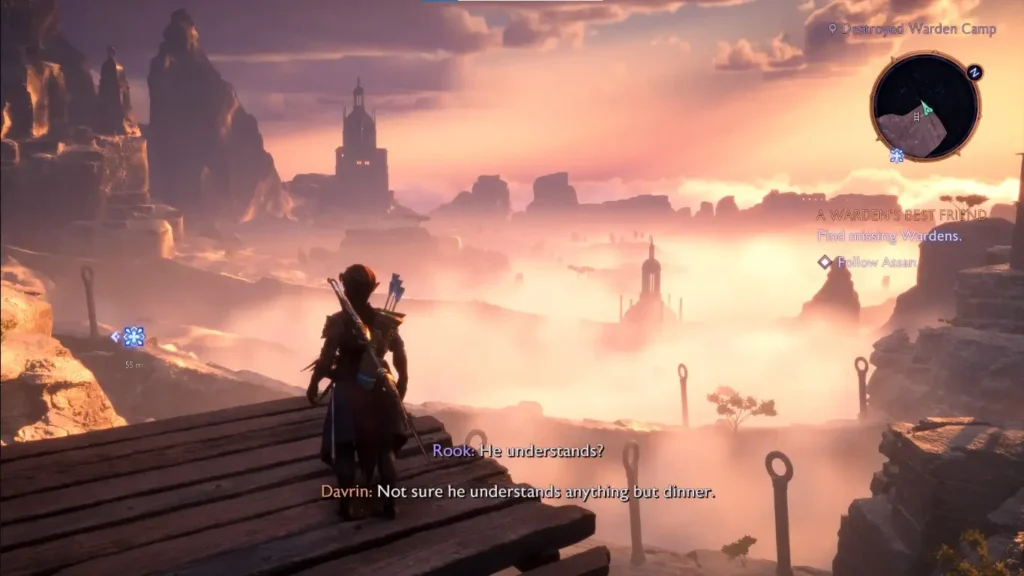
Players who have already completed Dragon Age: Inquisition may be surprised by Veilguard’s “short” lifespan, compared with the hundreds of hours required to complete the first game. The main reason for this difference lies in the game’s playground.
Inquisition offered vast open zones, packed with ancillary activities alongside scripted content. Here, Dragon Age: The Veilguard relies on fewer, smaller areas to explore, again, something similar to Mass Effect 3.
However, these areas are also full of collectibles and secondary objectives to discover, but without detracting from the main storyline for too long. In fact, many of these can be found along the way if you try to stray a bit off the beaten track. Sometimes hidden behind a fence that must be destroyed, sometimes by solving an environmental puzzle.
These puzzles will often require the skills of each companion: Harding will be able to move rocks, Bellara to interact with elven artifacts, and so on. Don’t worry, though, if the member isn’t part of your active team: thanks to a little plot twist (not really explained), Rook can “borrow” the necessary skill. The mechanics work quite well, and you’ll enjoy exploring the different regions.
Each region is more impressive than the others. Each offers a unique atmosphere, from the sublime elven forests of Arlathan to the sunny lands of Rivein and the dark catacombs of Nevarra. It’s a complete change of scenery, with each region offering richly detailed environments.
Dragon Age: The Veilguard is truly magnificent, not only for the quality of its textures and environments, but also for the outstanding lighting effects. These really add depth and character to the scenery, both in dialogue and cinematics, and during simple exploration. Faces are also well-designed and very expressive (even if some animations are a little strange), but it’s the hair’s visual quality that really impressed us, as it looks so realistic. Overall, Frostbite proves that it’s still got what it takes, and that it has nothing to be ashamed of when compared with other engines in the industry.
However, veteran players may be disappointed by the change in artistic direction, particularly by the new look of some of the series’ best-known faces (we’ll let you find out who they are) and the much “smoother” Qunaris here.
To complement this visual work, Bioware has chosen to work closely with Lorne Balfe and Hans Zimmer on the title’s soundtrack. Two big names for which we had high expectations. Unfortunately, we have to admit that we were a little disappointed on this point. The soundtrack isn’t bad, but apart from certain bosses and final scenes, it never really made an impression on us.
Spectacular Combat, A New Standard for Dragon Age

Let’s move on to Dragon Age: The Veilguard’s gameplay, which is likely to divide the community. In the past, confrontations were tactical, with the use of a “tactical pause” to define the next action of each character, adapting to what the opponent was doing. But in 2014’s Dragon Age: Inquisition, this aspect had already begun to retreat to offer new players a more action-oriented approach.
Here, the tactical pause is a thing of the past, and battles always take place in real-time. Much more focused on action and excitement, but they’re still highly satisfying. We have to admit that we were seduced by this gameplay, which is very similar to Mass Effect 3, a title already mentioned more than once in this article.
You team up with one or two companions, each with its own set of skills to be used in combat. You can open a quick-action menu to freeze the situation and select the skills you wish to use for you and both your companions (you can also instruct them to target a particular enemy). Depending on the skills used, some can be combined to inflict heavy damage on opponents. This means you’ll need to consider the best possible combinations, especially against the bosses. These skills create a magnificent ball of lighting effects, contributing to the impression that confrontations are more about the show than realism. As proof of this, our companions teleport onto the targeted enemy when using a skill, and they never seem to fall in battle, offering us constant opportunities to launch a maximum number of attacks.
Beyond skills, our offensive options include a simple attack that can be used to perform different combos depending on the number of short or long presses on the appropriate button, and a ranged attack, and there’s also a special attack, to break through enemy armor more easily. While the options are limited at the start of the adventure and may cause a little boredom during confrontations, new attacks can be acquired from Rook’s skill tree.
Rook’s skill tree is pretty big, and works a bit like Final Fantasy’s Sphere Grid, requiring you to learn certain skills and follow a “ trail ” before you can unlock new ones. Composed of passive and active abilities, this skill tree enables you to shape the gameplay according to your preferences. On a positive note, and particularly to avoid player burnout, although you can’t change class during the game, you can reinvest your skill points in the tree anytime, at no cost, to change your specialty. This is a great opportunity to try out new things and new skills, and enjoy more variety.
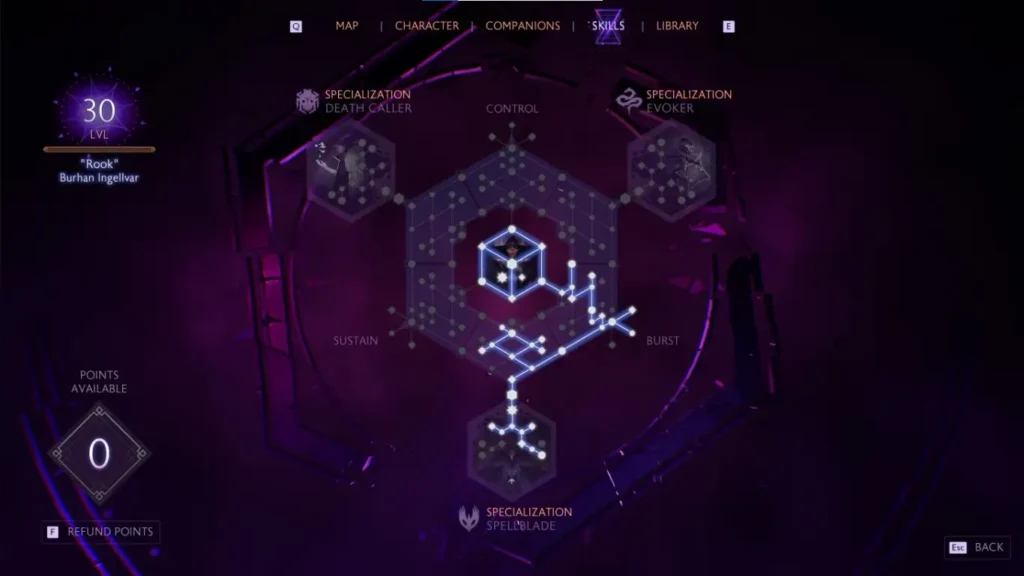
It’s also worth mentioning that each class has a different type of weapon. In our case, we were playing a mage, which allowed us to choose between a stave for ranged combat, or a dagger/orb for close combat. You can alternate between the two with a simple press of the down arrow, allowing you to diversify battles without getting bored.
Finally, like all good RPGs, Dragon Age: The Veilguard offers various pieces of equipment for our adventure. Weapons or armor, these pieces all have different stats suited to different gameplay styles. Note that you can’t get duplicates of a particular weapon or suit of armor, if you do, the rarity (and stats) of the piece already acquired will increase. The equipment collected will not always be dedicated to Rook, as some pieces will be specially designed for a particular companion. The surprising thing is that the title doesn’t limit the type of armor you can equip. So you can be a mage, but walk around in heavy armor without suffering any negative effects.
Conclusion
We’ve waited a long time to finally get our hands on Dragon Age: The Veilguard. Ten long years, but in the end, the result is a wonderful adventure. We spent over 40 hours on the title without ever getting bored. Bioware’s storytelling expertise is still evident, with high-quality writing and vibrant locations and characters. The companions are engaging, and the choices to be made throughout the adventure can sometimes have unexpected consequences. The gameplay formula has been modernized, and may leave some old-timers behind, with dynamic, spectacular combat that feels more like Mass Effect than the first Dragon Age. In terms of visuals, the title benefits from a genuine attention to detail, both in terms of its varied environments and the character models. Dragon Age: The Veilguard is definitely an experience you don’t want to miss.
